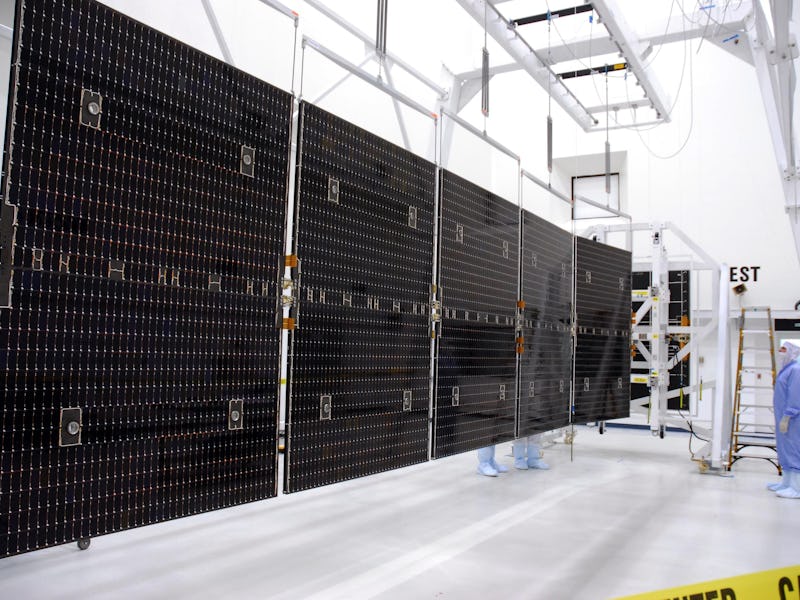Tesla's Battery-Powered Future Is Getting Affordable
Electric cars and rising energy costs are increasing demand.

Tesla’s CTO believes the battery-powered future is looming. At the Intersolar 2015 conference, J.B. Straubel, who co-founded the company, predicted that energy storage was about to get much cheaper and much bigger, thanks to increasing demand for high-capacity batteries. And he’s not talking about the AA in your Wii; he’s talking about powering cars, homes, and even commercial buildings with stored energy from both solar panels and from the traditional grid.
“It’s kind of like the difference between solar used for pocket calculators and satellites versus solar used for buildings,” he said in the keynote address. “The demand is orders of magnitude higher and puts it on a different trajectory for cost declines.”
Experts at Sustainnovate have issued a similar prediction, saying that the cost of big batteries will decline 40 to 60 percent by 2020. As buying energy off the grid becomes more expensive, utility-scale batteries are becoming a lot more appealing, increasing demand. Both the commercial and residential sectors can use these to move “behind the meter,” a term referring to energy-generating and energy-storing systems that are on-site instead of on the grid’s side. It doesn’t hurt that these systems are becoming cheaper to produce, thanks to advancements in solar technology.
Consider that the average American home needs 30 kWh of electricity a day. Batteries like Tesla’s 100-kWh Powerpack as well as the smaller Powerwall can charge from the grid during off-peak hours as well as store solar power during the day, releasing it when it’s most economical. The Powerpack can even be scaled up into an array to form a mini on-site power plant for larger businesses.
Adding to the demand for bigger and cheaper storage, Straubel also believes that nearly all of our cars will be electric in less than 10 years. Better get in line for your Model X.